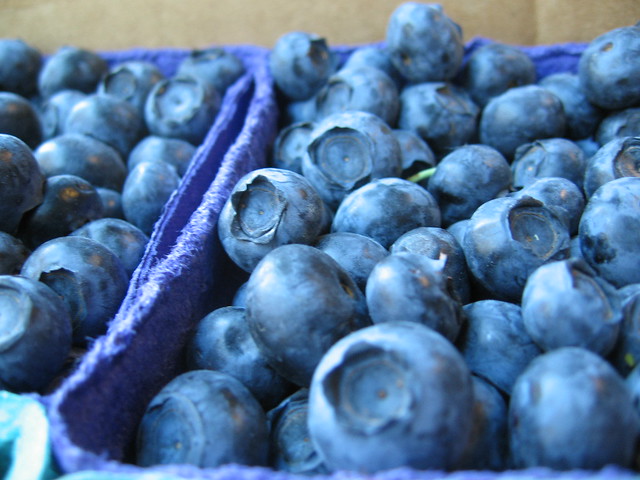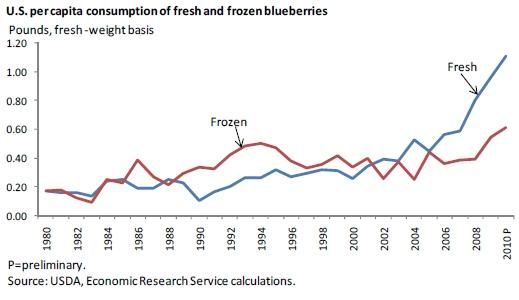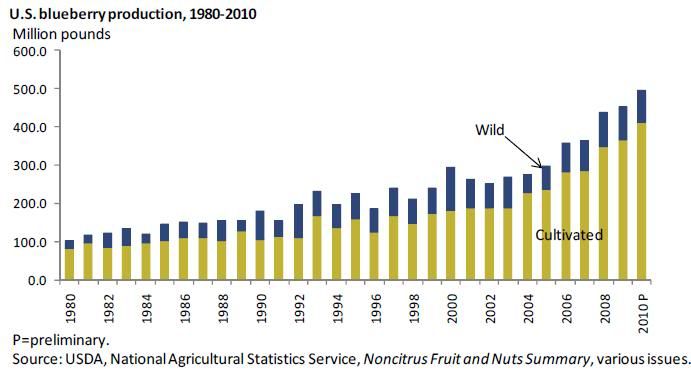
source: flickr
A member of the genus Vaccinium, blueberries are related to many commercially important and popular fruit species, like cranberry, lingonberry, and huckleberry. Blueberries are mainly native to North America and are lauded for their health benefits.
Demand for blueberries in the United States has grown, with fresh and frozen per capita consumption both increasing over the last three decades. This growth was spurred by heightened consumer interest in healthy diets and the proactive efforts of the U.S. blueberry industry in raising consumer awareness of the health benefits derived from blueberry consumption.

Throughout the 1990s to 2001, Americans were eating more frozen blueberries than fresh. Beginning in 2002, per capita fresh blueberry consumption was estimated to have exceeded those for frozen (on a fresh-weight basis). Fresh blueberry consumption reached a record 1.11 pounds per person in 2010, and at an estimated 0.60 pound, per capita consumption of frozen blueberries was also at an all-time high in 2010, aided by increased production, near-record imports, and continued large inventories at the beginning of the year.
Blueberries come in second in terms of crop size, trailing strawberries. Average 2008-10 strawberry production was 2.72 billion pounds while blueberry production was 462.5 million pounds.

Michigan and Maine continue to lead the country in blueberry production but their combined share of total utilized production has declined from 60 percent during the 1990s to around 40 percent during 2008-10. Average wild production in Maine and cultivated production in Michigan grew during the past decade relative to the 1990s, but stronger output growth occurred in other key producing States such as Georgia, Washington, Oregon, North Carolina, and New Jersey. The California crop has tripled in size from the first reported estimate of 9.1 million pounds in 2005 to 28.0 million pounds in 2010—representing 7 percent of the total cultivated crop and produced from 4 percent of all the harvested cultivated blueberry acres in the United States.
Over the past 3 decades, imports have increased their presence in the U.S. fresh blueberry market, rising from around 36 million pounds in the 1980s to 176 million pounds in 2010.
Familiar blueberries and their lesser-known wild relatives are safeguarded by USDA scientists and curators at America's official blueberry genebank. The plants, collected from throughout the United States and more than two dozen foreign countries, are growing at the USDA Agricultural Research Service National Clonal Germplasm Repository in Corvallis, Oregon.
Good cultivars are being developed which grow in the heat.
Blueberries have been listed in superfood categories due to their ability to reduce cholesterol and fight atherosclerosis. They are rich in phytonutrients.
source: usda